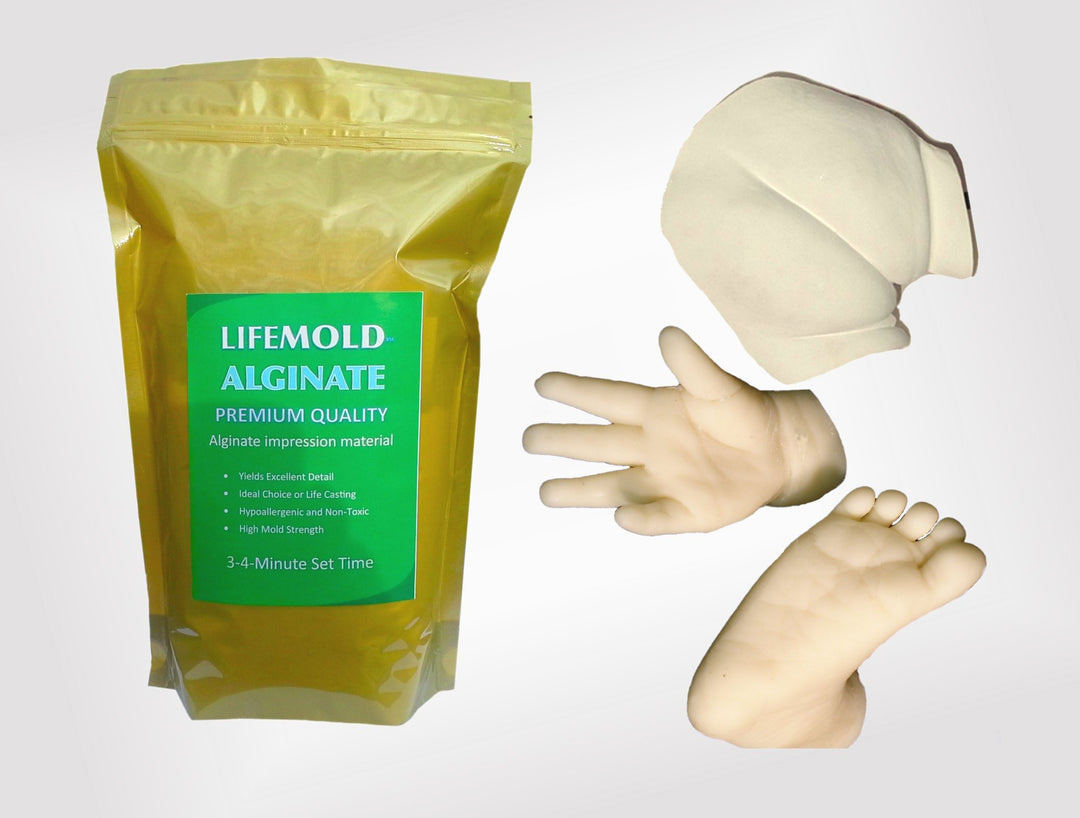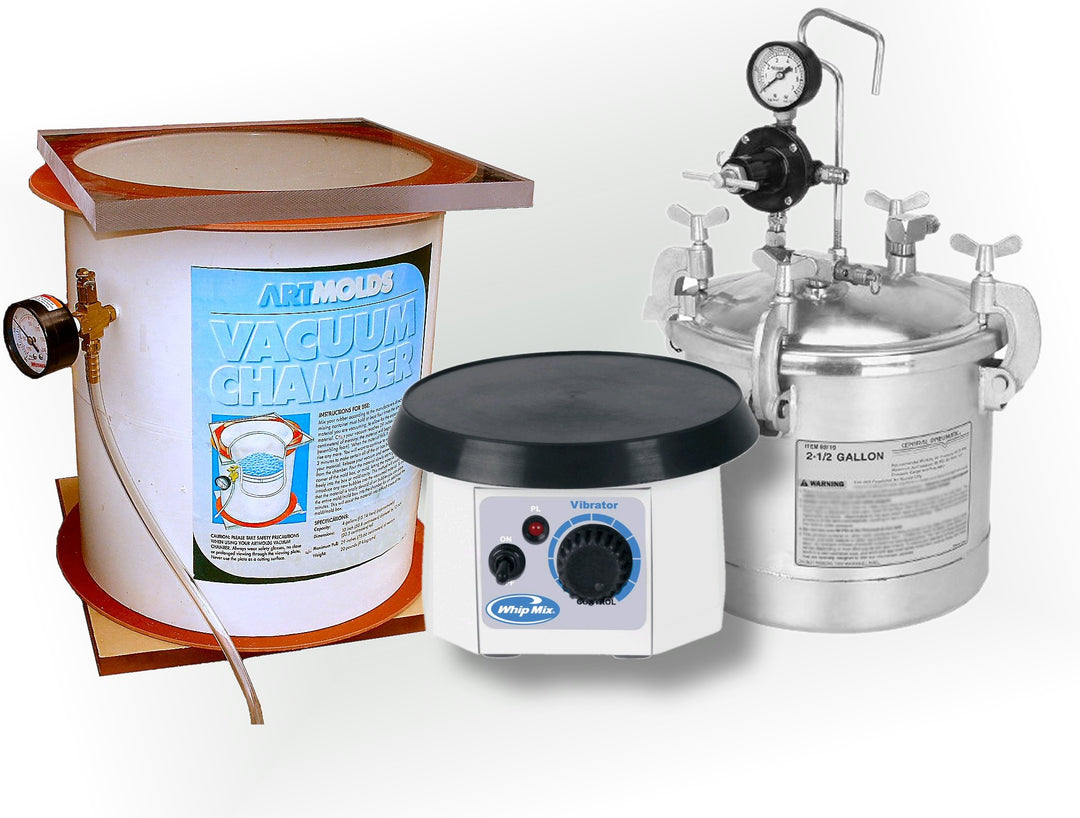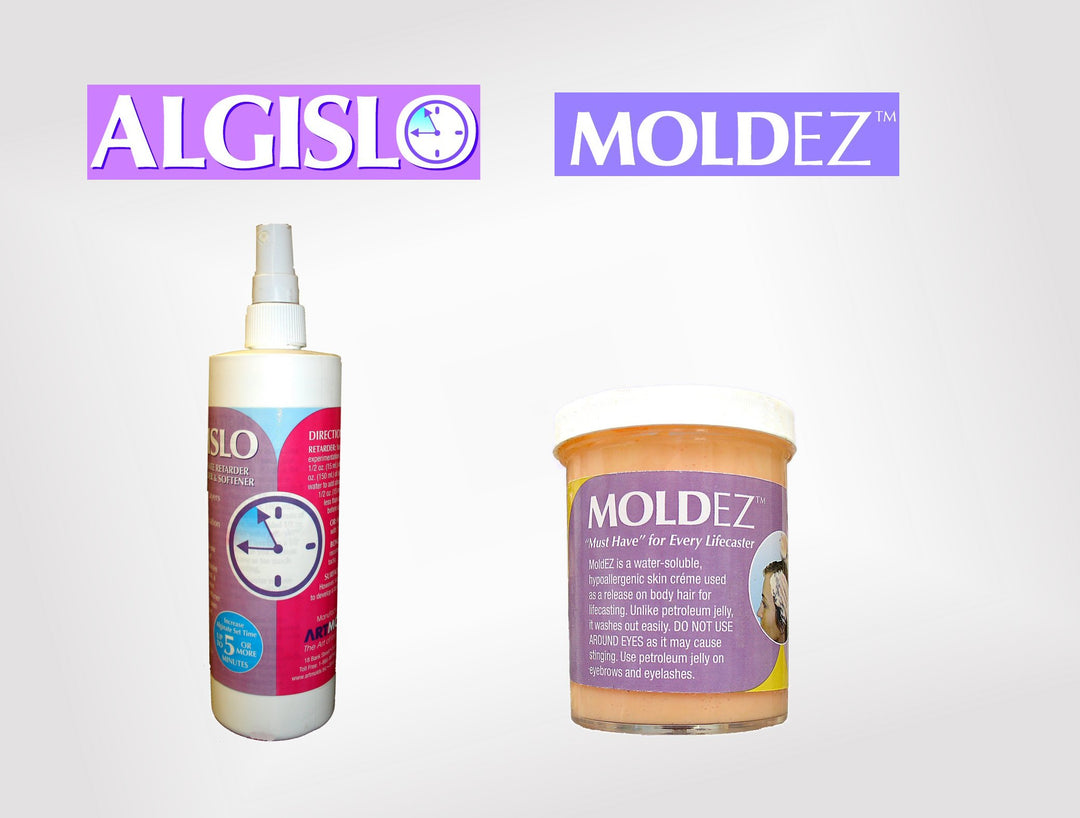SUBSCRIBE TO OUR BLOG
Subscribe to get special offers, free giveaways, and once-in-a-lifetime deals.It is important to understand the general concepts that are relevant to all mold making and casting materials. These are the following: studio safety, air bubbles and air traps, material hardness, general material mixing procedures and last, but certainly not least, important tools. Knowledge of these five topics will be invaluable to help you in the understanding and the use and application of your materials.
As a novice mold maker, you may have come across mold makers and casting artists discussing the Shore Hardness of various materials. Or you may have read things like SkinRite 10-silicone sets like a Shore A 10 and MoldRite 25 is preferable for making stronger molds, as it sets to a Shore A 25 hardness at room temperature.
This can seem quite mystifying in the beginning. The following is an explanation of Shore Hardness and why it is important to you. Shore hardness is nothing more than a measure of the hardness of a given material or how resistant it will be to permanent indentation. It is measured by the depth of indentation that is created on the material with a specified force.
The measuring instrument is called a Durometer, but Shore Hardness is named after its inventor Albert F. Shore. Shore was born in 1876 and founded the Shore Instrument Co. Inc, and during his lifetime produced the first quadrant type durometer in 1915 at the company based in New York City. The durometer and its scaling structure were developed in the 1920s by Shore to measure the hardness of polymers, elastomers, and rubbers.
Accordingly, there are different Shore Hardness scales for measuring the solidity of different materials with varying properties, like rubbers, polymers, and elastomers. In fact, there are as many as twelve different scales depending on the intended use, and each scale results in a value between 0 and 100. You can safely assume that higher values indicate higher hardness and vice versa. However, you will find that only two of these scales are most used for measuring the hardness of rubber compounds – ‘A‘ Scale for softer ones and ‘D’ Scale for harder ones.


To elaborate on these universal scales:
- Shore A Hardness Scale is used for measuring the hardness of flexible mold rubbers. These can range in hardness from very soft and flexible to medium and somewhat flexible to hard with almost no flexibility at all. It follows that Shore A0 obviously denotes extremely soft and gel-like rubbers. While semi-rigid plastics will be measured at the highest end of the Shore A Scale.
- Shore D Hardness Scale is reserved for measuring the hardness of hard rubbers, semi-rigid plastics, and hard plastics.
While not needed for plaster casting, Shore Hardness proves helpful when you must choose your materials, such as which silicone rubber should be used for making a mold or casting.
If your mold or casting requires flexibility, or your model has severe undercuts, opt for a lower Shore A Hardness number that will stretch easily and can be sealed properly as well. You will be able to easily extract the original model from the rubber mold or the subsequent casts from the silicone rubber mold after they have cured properly.
On the other hand, a rubber with a higher Shore Hardness number will be quite stiff and not flexible at all. Delicate molds and casts will tend to break during the de-molding process. But such rubbers are suitable for concrete castings, as they offer more resistance to abrasions and extrusions. This feature will be sorely lacking in the softer rubber compounds.
Therefore, while Shore Hardness is not needed for plaster casting, it plays a crucial level in making rubber molds and casts, especially with silicone rubber.
Now that you know all about how the Durometer of rubbers is calculated, you may still be uncertain as to what Durometer to select for your mold making needs. Never fear, as the selection process proves very easy. Standard models are most often made using a rubber with a Shore A 25-30 Durometer.
As an example, MoldRite 25 from EnvironMolds is a Shore A 25 rubber – a firmness which is perfect for everyday mold making. For prosthetics, models with extreme undercuts and doll making, a Shore A 10 is the preferred as a rubber of choice. Therefore, you would select SkinRite 10 translucent silicone for those applications. For a firmer rubber and an addition cure silicone, which is also food safe for baking, you should select BakeSil, which is a Shore A 37. For strong, rigid and all-purpose casting material, a Shore D 70-75 is generally preferred. KastEZ Resin is formulated for a cured Durometer of Shore D 75.


This is a typical modern digital handheld Durometer. Many available Durometers are analog, using a dial readout. Industrial Durometers are often mounted on test stands in which a sample is inserted, and a lever is pulled down, pressing the Durometer sensor into the material being tested.
The Shore Durometer hardness test is not a predictor of other properties, such as strength or resistance to scratches, abrasion, or wear. The test is also often confused with the flexibility of a material. Flexibility is a subjective characteristic, impacted not only by the durometer but also by the bend radius, which is a function of wall thickness and material properties. In other words, a softer durometer does not always equate with higher flexibility.
A Shore A Durometer gauge is used when testing softer rubber materials. Whereas the Shore D Durometer gauge is used for harder rubber materials and plastics. The accuracy of a Durometer gauge is +/-2.5. The operation of a Durometer is based on the penetration of an indentor into the material being tested under specific conditions. The material is generally termed “rubber or rubber—like.” Specifically, ASTM D2240 Durometer hardness testing is restricted to thermoplastic elastomers, vulcanized (thermoset) rubber, elastomeric materials, cellular materials, and some plastics, as defined by the ASTM Committee on Terminology in ASTM D1566.


This is a schematic of how a Durometer is used in testing the hardness or softness of a material. A sample is centered under the sensor probe or needle. A false reading will be given if the probe is used too close to the sample’s edge. The correct thickness of a sample must also be considered, as less than 6 mm (approx. 0.250") will provide a false reading. The probe is pressed into the sample as far as the sample allows, and the Shore measurement is read from the analog or digital dial. In analog type Durometers, the indication of the “moment of cessation” (when the probe stops) may also be determined by way of an integral second hand, a ‘maximum’ or ‘lazy’ hand, which follows the indicating hand and retains the maximum value achieved.
The principle used to measure hardness is based on measuring the resistance force of the penetration of a pin into the test material under a known spring load. The amount of penetration (max. 2.5 mm) is converted to a hardness reading on a scale of 100 units.
A Durometer measurement should be taken at least 12 mm (approx. 0.500") from the edge of a sample, as the hardness characteristic of any sample tends to change at the edges. Also, whenever possible, the thickness of a sample should exceed 6 mm (approx. 0.250"). If the sample is thinner than this, then the sample can be backed with a sample of the same material to increase the thickness.
Conclusion
Understanding durometer in terms of Shore Hardness is essential in mold making and casting, particularly when working with materials like silicone rubber and resins. It guides the selection of materials based on their hardness, which affects their flexibility, ease of use, and suitability for different applications. While Shore Hardness is a valuable indicator of material properties, it should be noted that it does not predict other characteristics such as strength or resistance to wear. Therefore, mold makers and casters must consider both the hardness and other material properties to choose the most suitable material for their specific needs.






Leave a comment